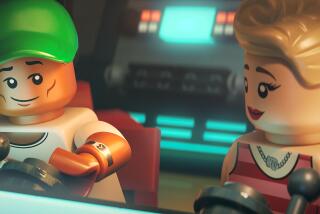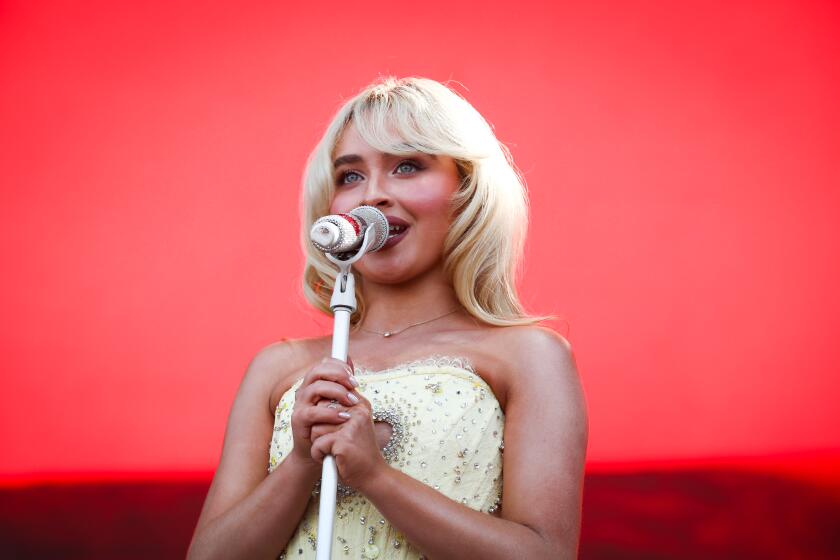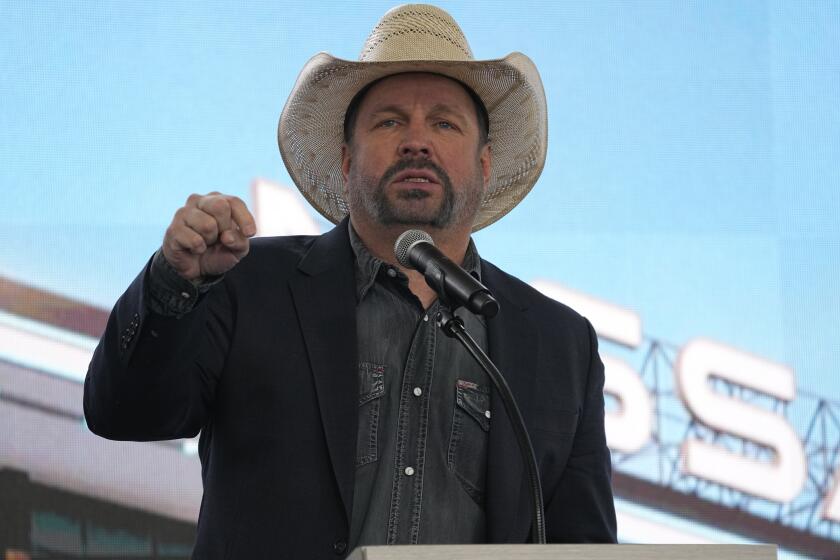Everything is awesome, indeed, for Mark Mothersbaugh
If you walk out of “The Lego Movie” without humming its absurdly chipper theme song, “Everything Is Awesome,” you’re made of stronger stuff than most.
The tune, a sugar blast of optimistic synth-pop featuring Tegan and Sara and the Lonely Island, is the centerpiece of Mark Mothersbaugh’s film score for the film.
“The Lego Movie’s” music — a mix of vintage analog synthesizers and more traditional orchestral work — evokes the zany, synthetic qualities of a film made entirely from Legos. But Mothersbaugh also adds moments of poignancy, when the movie enters its mind-bending third act (we won’t spoil it, but it’s a “Sixth Sense”-worthy curveball).
PHOTOS: Unexpected musical collaborations
We talked with the composer, visual artist and Devo frontman about writing real music for plastic movies, an upcoming museum tour of his visual art and whether “Everything Is Awesome” could actually stand a chance on pop radio.
This is such a strange project — a kids comedy that’s also a metaphysical statement on free will and existence. You’d worked with directors Chris Miller and Philip Lord before, but what convinced you that this project was going to be something weirder than just a toy tie-in film?
I have a track record of working with these guys. We’ve done two projects before that had seemed kind of light, “Cloudy With a Chance of Meatballs” and “21 Jump Street.” With that last one, I remember thinking, “Why would anyone want to do a movie of that?” But they have such a great way of making the most out of unexpected material.
PHOTOS: Musicians’ onstage snafus
The aesthetic of the movie is obviously bound by the fact that everything’s made of Legos. How did you want to evoke that bright, blocky look and feel in the music?
I almost wrote two full scores that tracked simultaneously. When I saw the test footage, which had a ship on Lego waves and explosions all made of Legos, it looked like it needed a strong electronic presence. I got to indulge my love of analog synths and circuit-bending instruments from the beginning of electronic music to the current time.
It could have been all electronic, but I wanted to give the directors a lot of freedom. There were some parts that just needed 100 humans playing violins and singing. With animation, it’s hard to get rid of the orchestra. It helps to have some real humans in the room.
Let’s talk “Everything Is Awesome.” The song is ridiculous, but it also does the exact thing it’s making fun of, which is to get you super pumped up for the day. What’s going on in that song that lets you have it both ways?
The directors requested something like that, and I think it fits in a smart way. It’s a mantra for everyone to get up and go to work and buy $30 cups of coffee. It’s an irritant. But after the transformation in the movie, when the characters learn to create, it becomes something bigger. And then at the ending it becomes kind of ironic.
It’s got Tegan and Sara and Lonely Island on vocals. Do you think it could hypothetically work on actual drive-to-work pop radio?
Maybe if it were 10 to 15 beats per minute slower it could have a chance. I can appreciate pop music, but I’m a parent now, and my kids think that Bruno Mars is better than the Beatles. Radio is just amusing to me. But Tegan and Sara and Lonely island each have lots of fans; it wouldn’t surprise me if someone did a version of it and it worked.
How did having kids affect what you wanted to do with the score?
Being around young people on a daily basis, having to deal with them growing up and figuring out how to be human, it’s real and it’s hard for them. I find that having kids made me gravitate toward projects they’d enjoy. Like when I did “Yo Gabba Gabba!,” they made me think of things in a different way than “Ugh, I have to drive to Orange County and put on makeup and come back and finish working on this movie I’m doing.”
A retrospective of your visual art debuts next year at the MCA Denver and travels around the country after that. Is it especially satisfying to have that side of your career acknowledged so thoroughly?
It’s interesting. I write music every day and I draw and paint every day too. We made the Devo energy domes and the black plastic hair; we never thought of the visual art as separate from the musical art. But when I collaborate on films, I usually have absolutely nothing to do with the visuals. I’ve done lots of gallery shows over the years, and the director of [the Museum of Contemporary Art Denver] noticed all that, and he got interested in showing it alongside the music. A lot of this stuff, nobody has looked at it but me, so I could be really free in making it and never censor myself. But it’s all so personal that I’m actually a little nervous about finally showing it.
More to Read
The biggest entertainment stories
Get our big stories about Hollywood, film, television, music, arts, culture and more right in your inbox as soon as they publish.
You may occasionally receive promotional content from the Los Angeles Times.











